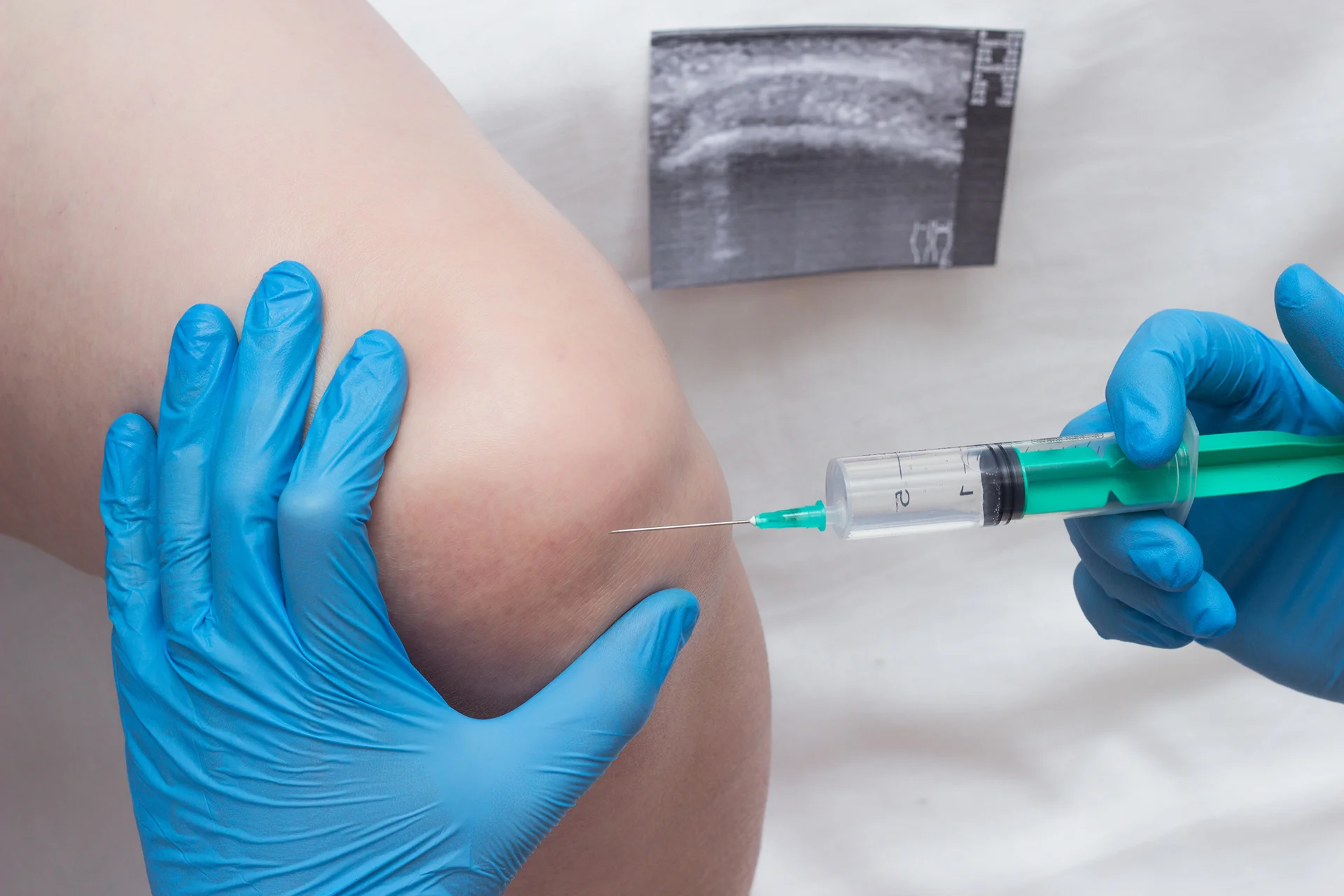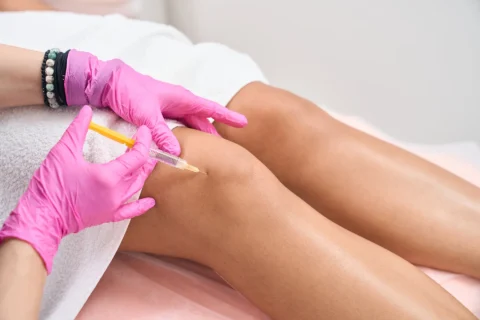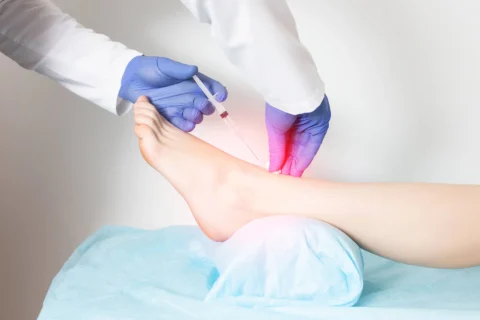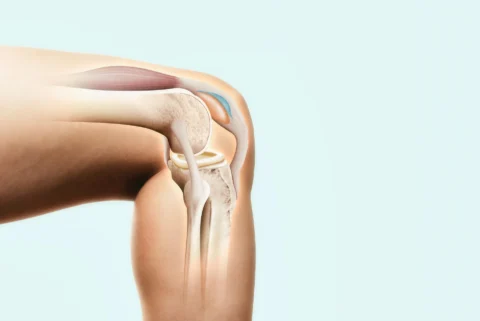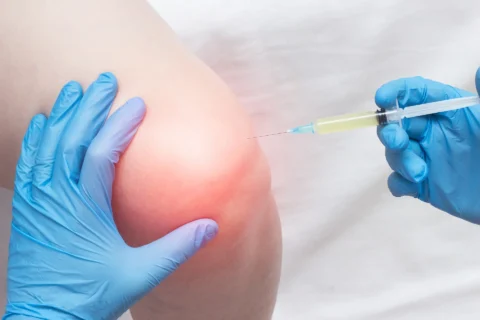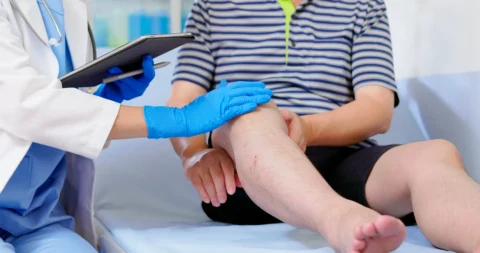Discover the clinically proven success rate of stem cell injections for knees and what it means for you.
If you live with knee arthritis, you know the aches, pains, and stiffness it can bring. Medications may help temporarily but often come with side effects. Steroid injections provide short-term relief before the pain returns. Knee replacements seem drastic for moderate arthritis.
Is there another way? Emerging research shows promising results for stem cell therapy in reducing arthritis inflammation and repairing damaged cartilage. Patients report walking, exercising, and living life again after treatment.
But do the success rates as reported in scientific studies support the rising trend? In this article, we’ll cut through bold claims by diving deep into figures backed by clinical trial data.
What Is the Success Rate of Stem Cell Therapy for Knees in Treating Arthritis?
The average success rate of stem cell therapy for reducing knee arthritis pain and improving function is 70-80% in the first 1-2 years based on clinical studies. Looking at most studies, those rates could still go lower or higher.
Long-term research is limited and still mostly ongoing, though. One retrospective study stated they found a success rate of an average of 70-80% among patients treated with the Stanmore Stem Cell Project (SSCP) but did not provide detailed methodology.
More recently, larger meta-analyses pooling multiple trials, like those published in 2020 or later, find mesenchymal stem cells can effectively reduce arthritis knee pain compared to placebo over 1-2 years follow-up.
One good example is an NCBI meta-analysis published in May 2020, which found that treatments that directly affect osteoclast activity effectively reduced pain in knee osteoarthritis.
However, limitations remain around standardization of techniques, trial quality, and longer-term durability of results.
Critically, no study yet provides definitive 5+ year follow-up showing if initial pain and function improvements are maintained better than other treatments like corticosteroids or surgery.
One other 2020 study did report sustained benefits at 2 years, but noted longer-term durability beyond that remains unknown.
What Is the Patient-Reported Success Rate of Stem Cell Therapy for Knees?
While some clinics claim 70-100% success for knee arthritis, clinical trial data indicates the patient-reported success rate is closer to the 70-80% figure mentioned above.
Patient Perspectives Offer Insights But Can Be Biased
Many stem cell clinics report exceptional success rates of 70-100% based on patient surveys and testimonials. However, these glowing claims are rarely backed by rigorous clinical trial evidence, according to our analysis.
There is likely a strong positive bias influencing these self-reported results. Patients feeling invested in the treatment may overestimate benefits.
For example, the DVC Stem website claims an 85% average success rate, but doesn’t provide further data.
Analyzing Clinical Trial Data Gives a More Accurate Picture
To gain a more accurate picture, our practice emphasizes patient-reported scores from controlled clinical trials. These provide less biased outcomes.
Trial results consistently demonstrate more modest but clinically meaningful improvements around 75% for reducing arthritis knee symptoms.
The placebo effect likely contributes to patient perspectives. So we interpret anecdotal reports through that lens.
Key Takeaways
- While patient reviews suggest 70-100% see benefits, controlled trial data indicates 70-80% success is more realistic.
- Our goal is to give patients realistic expectations grounded in medical evidence, along with compassionate care.
- Both clinical outcomes and patient perspectives offer useful insights when not taken in isolation.
What Factors Influence the Success Rate of Stem Cell Therapy for Knees?
The type and quality of stem cells, patient health and arthritis severity, precise injection method, combination therapies used, and how clinical trials define success all impact the likelihood of effective knee arthritis symptom relief from stem cell treatment.
- Cell Type and Quality
The specific type of stem cells used, most commonly mesenchymal stem cells from bone marrow or adipose tissue, affects outcomes. More pure cell preparations lead to better results.
Careful harvesting and processing methods to isolate and concentrate viable, high-quality stem cells boost success rate.
- Patient Age and Disease Severity
Younger patients in the early stages of osteoarthritis tend to respond better than older patients with advanced arthritis.
Overall health, weight, activity level, and other lifestyle factors also play a role.
- Injection Method
Direct injection into the knee joint space yields better outcomes than intravenous infusion.
Ultrasound or fluoroscopy guidance improves precision.
- Combination Therapies
Adding platelet-rich plasma or hyaluronic acid may potentially enhance stem cell results through synergistic effects.
- Defining Success
How clinical trials define and measure “success” influences perceived rates. Using multiple criteria like pain, function, and quality of life provides a fuller picture.
FAQs
What is the success rate of stem cell therapy for knees compared to traditional surgery?
Stem cell therapy for knees has a 70-80% success rate for pain relief and restored function versus traditional surgery which is considered effective with an 80-90% success rate over time.
Can the success rate of stem cell therapy for knees vary based on the type of knee injury?
Yes, the success rate of stem cell therapy for knees can vary based on factors like the grade of osteoarthritis and the amount of stem cells injected, which influences cartilage repair.


